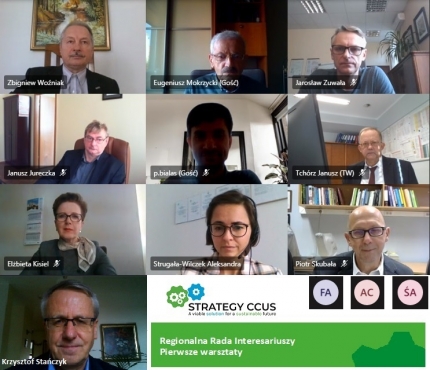How STRATEGY CCUS led to, and informed development of, PilotSTRATEGY
When the European Union’s Horizon 2020 programme launched a funding call for geological storage pilots last year, the STRATEGY CCUS partners wasted no time in putting together a bid. Although only half way through the three-year project, it was already clear the shortage of identified CO2 storage sites was a key obstacle in the local carbon capture utilisation and storage (CCUS) development plans they were formulating.
The research proposal was successful and PilotSTRATEGY was born. The five-year project, which commenced in May, is focusing on deep saline aquifers (DSAs) – porous rock formations filled with brine at least one kilometre below ground. These aquifers are a largely untapped storage resource with the potential to store large amounts of CO2 captured from clusters of industry.
“STRATEGY CCUS identified storage capacity as the most uncertain factor in long-term implementation planning. We couldn’t estimate bankable storage capacity in any of the regions because the sites were too immature.” says Dr Fernanda Veloso of BRGM, the French Geological Survey, who is leading both STRATEGY CCUS and PilotSTRATEGY.
Realistic plans
“We’re trying to make realistic plans – storage impacts the rest of the carbon capture and storage (CCS) chain,” she says. “When we are planning CO2 transport infrastructure, for example, we don’t have an exact point of CO2 injection. We can only suppose where we might have storage capacity. Transport has a big impact on costs so this affects our economic evaluations.”
PilotSTRATEGY is working in five of the eight regions studied in STRATEGY CCUS, all considered promising for CCS/CCUS. It is undertaking detailed studies in the Paris Basin in France, Portugal’s Lusitanian Basin and Spain’s Ebro Basin. It will also develop knowledge of CO2 storage options in West Macedonia in Greece and Upper Silesia in Poland.
“Some regions can plan to send the captured CO2 to the North Sea but some are too far away - it’s just not feasible for everyone, environmentally or economically speaking,” says Dr Veloso. “There is an urgent need to characterise and better estimate geological storage resources. PilotSTRATEGY will address this in southern and eastern Europe.”
Strong interest from industry
Nevertheless, STRATEGY CCUS revealed promising interest in CCUS from industry and a desire for more detailed information on CO2 storage, including on costs and regulation, says Dr Paula Fernández-Canteli of the Instituto Geológico y Minero de España (IGME), the Geological Survey of Spain.
“We saw that industry shows high interest - we thought they would be more sceptical!” she says. “They are confident about capture and about transport – what they want to know is if we can really do CO2 storage in Spain. They want to see a pilot storage site with a proper characterisation and to know how much it will cost.”
Societal acceptance
STRATEGY CCUS’s second key learning has been the need to build societal acceptance, she says.
“It is very clear to everybody that we need society’s support for these types of projects. We need to explain what it involves and to understand what their worries are. There are many misunderstandings – it is key to find ways to explain to society what ‘CO2 storage’ really means.”
In PilotSTRATEGY, societal acceptance will be addressed in Work Package 6, led by Germany’s Fraunhofer Institute for Systems and Innovation Research.
As well as from industry, STRATEGY CCUS’s research has indicated generally positive or accepting attitudes towards CCUS from stakeholders, such as local government, the scientific community and non-governmental organisations, says Fraunhofer’s Dr Sabine Preuss.
While STRATEGY CCUS examined views at a regional level, PilotSTRATEGY will focus on specific areas where CCS operations could be sited. “We need to dig deeper and find out more from the populations and communities that are directly affected and integrate them in the process,” says Dr Preuss.
“I learned in STRATEGY CCUS that it takes a long time to implement CCUS. It doesn’t have to be a long process from the societal point of view – it’s a long process because of the technical, geographical and political aspects, and the regulations,” she says.
“There are so many aspects that have to be considered and they are rather new. It will take time to get to know them, to see what’s possible and to engage with all relevant stakeholders. This exchange needs to be a continuous process.”
Picture caption: STRATEGY CCUS Regional Stakeholder Committee meeting; these will be continued and developed in PilotSTRATEGY. Image courtesy of STRATEGY CCUS.



